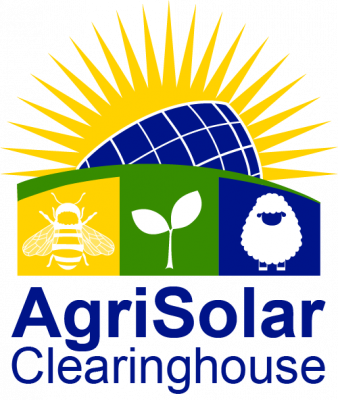Roadside Renewables: Exploring Alternative Uses of Highway Right-of-Way to Reduce Costs
The U.S. Department of Transportation provides case studies on states that are installing solar panels in the right-of-way.
This author has not written his bio yet.
But we are proud to say that Marisa Larson contributed 54 entries already.
The U.S. Department of Transportation provides case studies on states that are installing solar panels in the right-of-way.
State Departments of Transportation (SDOTs) are increasingly exploring the use of highway right-of-way (ROW) to accommodate renewable energy technologies. This paper provides information on potential business models, state rules, regulations, and policies, and example projects for energy generation in the ROW.
The Free Energy Solar Highway Program research project identified best practices nationally and determined the financial feasibility of generating solar power on New Mexico DOT property at the lowest possible cost.
This paper analyzes the policy designs and economic benefits of prairie strips.
This is a summary of research that tested the efficacy of prairie strip practice to improve honey beekeeping while maintaining a community of wild pollinators compared to farms without prairie strips.
This is a one-page overview of contour buffer strips, their application, and their effectiveness.
This paper discusses types of infrastructure commonly found on RE-Powering sites and characterizes where, and to what extent, this infrastructure affects the prospects for site redevelopment.
This study assessed the performance of a blind-type shading regulator that can automatically rotate semi-transparent photovoltaic blades installed on the greenhouse roof in response to sunlight variation.
This paper describes results of crop outputs for certain vegetables with differing gap spaces between rows to determine optimal crop production. It addresses nutrient levels, soil water content, and plant temperature below the panels.
Solar energy is the fastest growing renewable energy source. It is predicted that 20-29% of global power will be sourced by solar by 2100. Solar energy requires larger land footprints and long-term commitments. Vegetation left under solar panels reduces soil degradation and opens up the potential for solar grazing as a dual income for farmers and vegetation management for solar utilities. Research conducted on multiple solar sites in Minnesota reveal there can be meaningful forage in 45% shade and 80% shade from solar panels. Furthermore, grazing sheep under solar panels produces both a higher content of carbon and nitrogen in the soil. Managed episodic grazing can be used as a strategy for carbon sequestration and vegetation management. Soil properties show an overall improvement and benefits depending on soil properties. Future work must be done to measure the long term soil carbon and hydrological properties.
Helping people build resilient communities through local and sustainable solutions that reduce poverty, strengthen self-reliance, and protect natural resources.
To learn more about NCAT and its mission, please visit: WWW.NCAT.ORG.
This material is based upon work supported by the U.S. Department of Energy’s Office of Energy Efficiency and Renewable Energy (EERE) under the Solar Energy Technologies Office Award Number DE-EE0009372.
This site uses cookies. By continuing to browse the site, you are agreeing to our use of cookies.
Accept settingsHide notification onlySettingsWe may request cookies to be set on your device. We use cookies to let us know when you visit our websites, how you interact with us, to enrich your user experience, and to customize your relationship with our website.
Click on the different category headings to find out more. You can also change some of your preferences. Note that blocking some types of cookies may impact your experience on our websites and the services we are able to offer.
These cookies are strictly necessary to provide you with services available through our website and to use some of its features.
Because these cookies are strictly necessary to deliver the website, refusing them will have impact how our site functions. You always can block or delete cookies by changing your browser settings and force blocking all cookies on this website. But this will always prompt you to accept/refuse cookies when revisiting our site.
We fully respect if you want to refuse cookies but to avoid asking you again and again kindly allow us to store a cookie for that. You are free to opt out any time or opt in for other cookies to get a better experience. If you refuse cookies we will remove all set cookies in our domain.
We provide you with a list of stored cookies on your computer in our domain so you can check what we stored. Due to security reasons we are not able to show or modify cookies from other domains. You can check these in your browser security settings.
These cookies collect information that is used either in aggregate form to help us understand how our website is being used or how effective our marketing campaigns are, or to help us customize our website and application for you in order to enhance your experience.
If you do not want that we track your visit to our site you can disable tracking in your browser here:
We also use different external services like Google Webfonts, Google Maps, and external Video providers. Since these providers may collect personal data like your IP address we allow you to block them here. Please be aware that this might heavily reduce the functionality and appearance of our site. Changes will take effect once you reload the page.
Google Webfont Settings:
Google Map Settings:
Google reCaptcha Settings:
Vimeo and Youtube video embeds:
The following cookies are also needed - You can choose if you want to allow them:
You can read about our cookies and privacy settings in detail on our Privacy Policy Page.
Privacy Policy